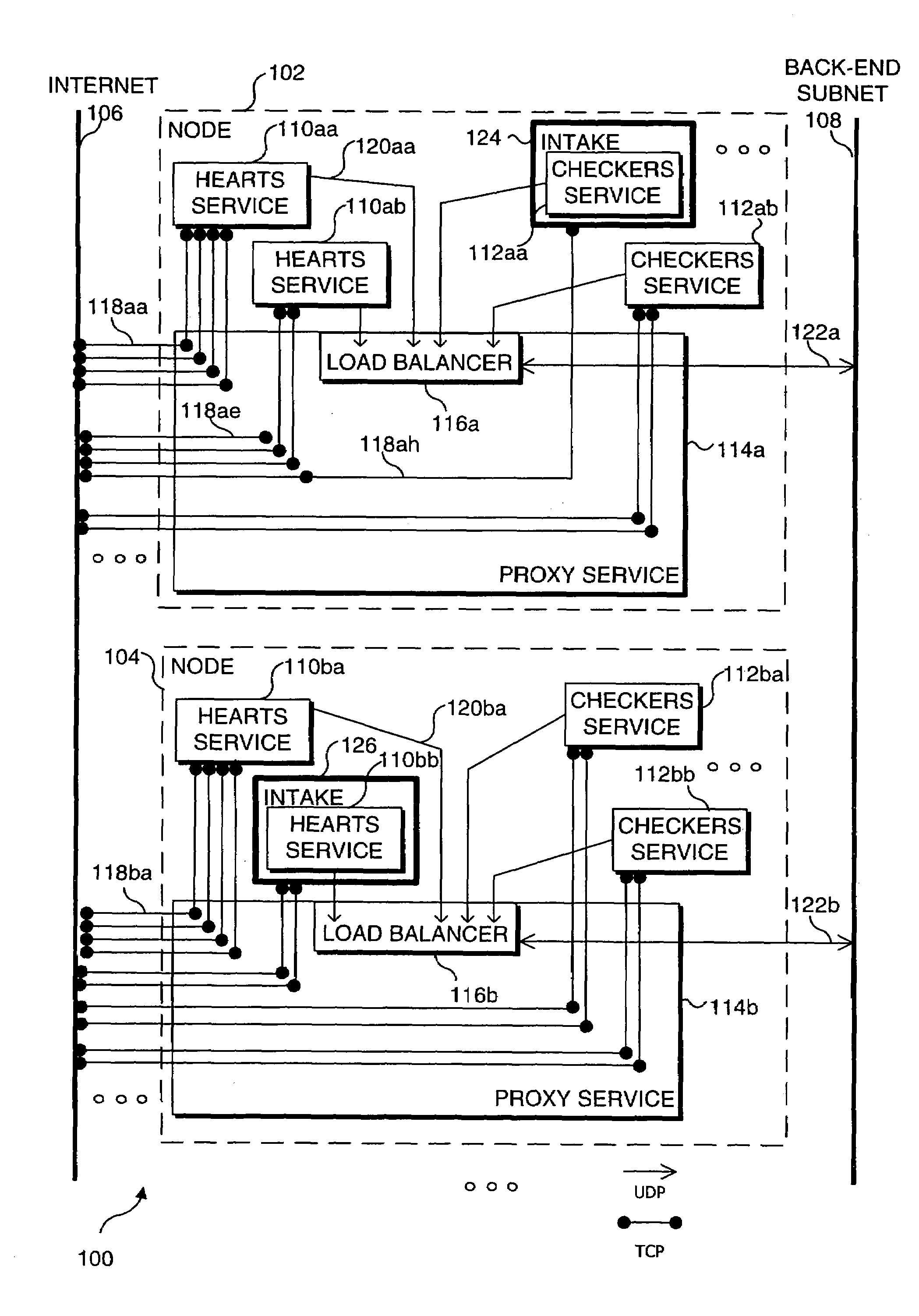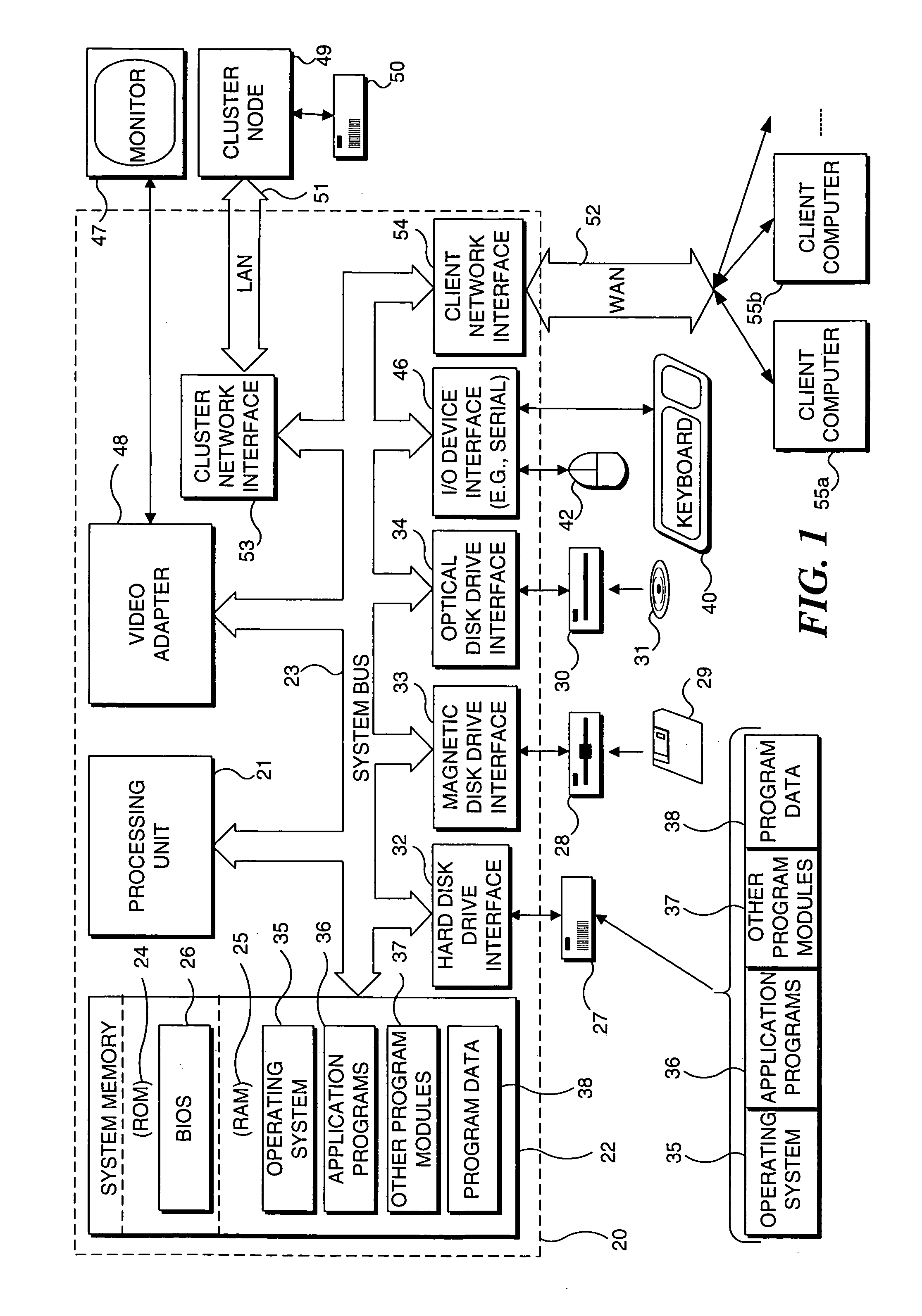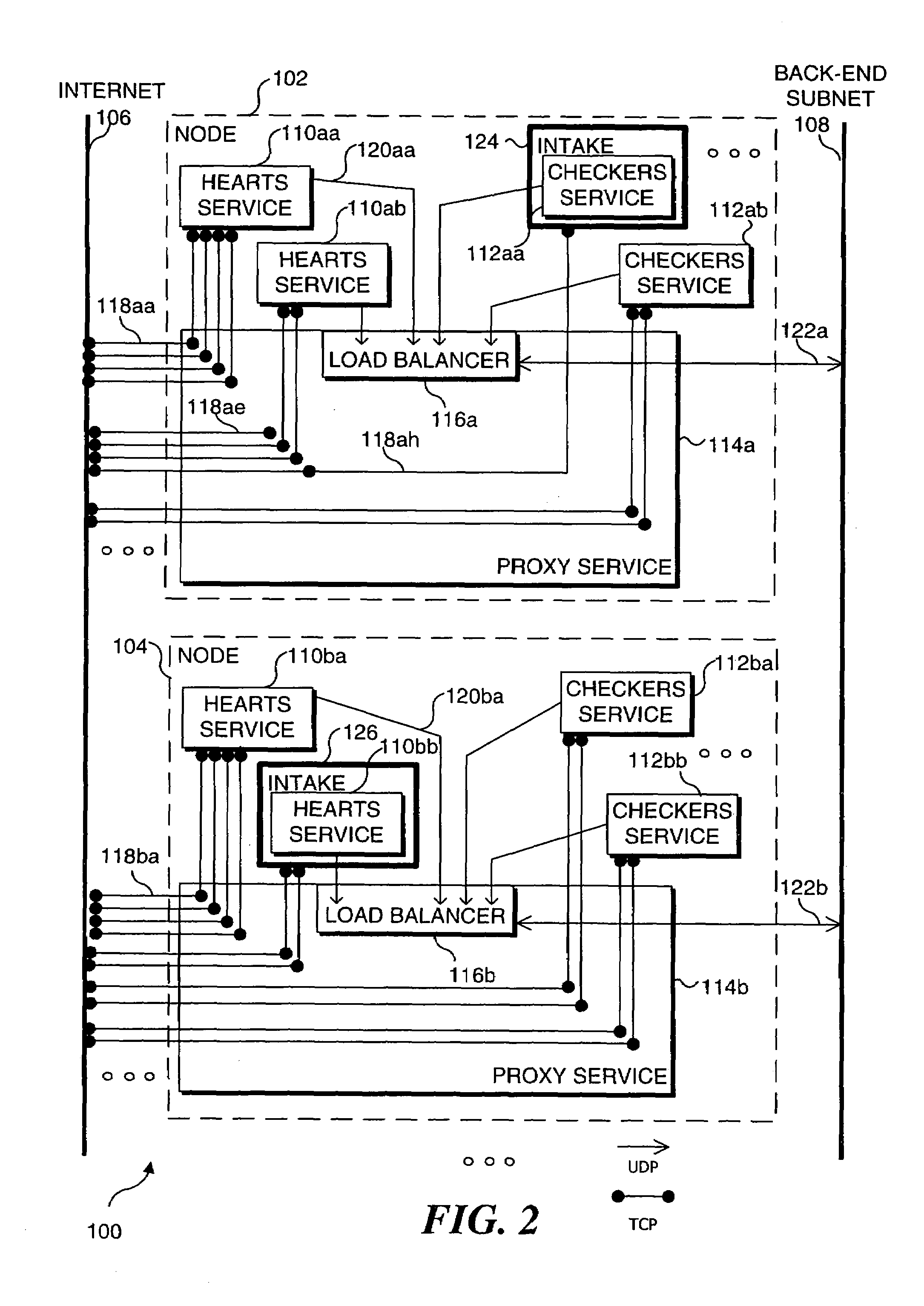Distributed load balancing for single entry-point systems
a load balancing and single-entry-point technology, applied in the field of resource utilization methods and systems, can solve the problems of insufficient fault tolerance, balance of load, and previous load-balancing hardware and software techniques have not provided for grouping client requests for related tasks on a specific resource node, so as to reduce the number of first-tier stateless nodes and efficient resource utilization
- Summary
- Abstract
- Description
- Claims
- Application Information
AI Technical Summary
Benefits of technology
Problems solved by technology
Method used
Image
Examples
Embodiment Construction
Exemplary Operating Environment
[0037]FIG. 1 and the following discussion are intended to provide a brief, general description of a suitable computing environment in which the present invention may be implemented, preferably in regard to a server that stores and provides Web pages and a client that requests the Web pages and displays them to a user. Although not required, the present invention will be described in the general context of computer-executable instructions, such as program modules that are executed by a computer configured as a Server, and by client computing devices, such as personal computers. Generally, program modules include routines, programs, objects, components, data structures, etc. that perform particular tasks or implement particular abstract data types. Also, those skilled in the art will appreciate that the present invention may be practiced to balance requests from other client computing devices, including hand-held devices, pocket personal computing device...
PUM
 Login to View More
Login to View More Abstract
Description
Claims
Application Information
 Login to View More
Login to View More - R&D
- Intellectual Property
- Life Sciences
- Materials
- Tech Scout
- Unparalleled Data Quality
- Higher Quality Content
- 60% Fewer Hallucinations
Browse by: Latest US Patents, China's latest patents, Technical Efficacy Thesaurus, Application Domain, Technology Topic, Popular Technical Reports.
© 2025 PatSnap. All rights reserved.Legal|Privacy policy|Modern Slavery Act Transparency Statement|Sitemap|About US| Contact US: help@patsnap.com



